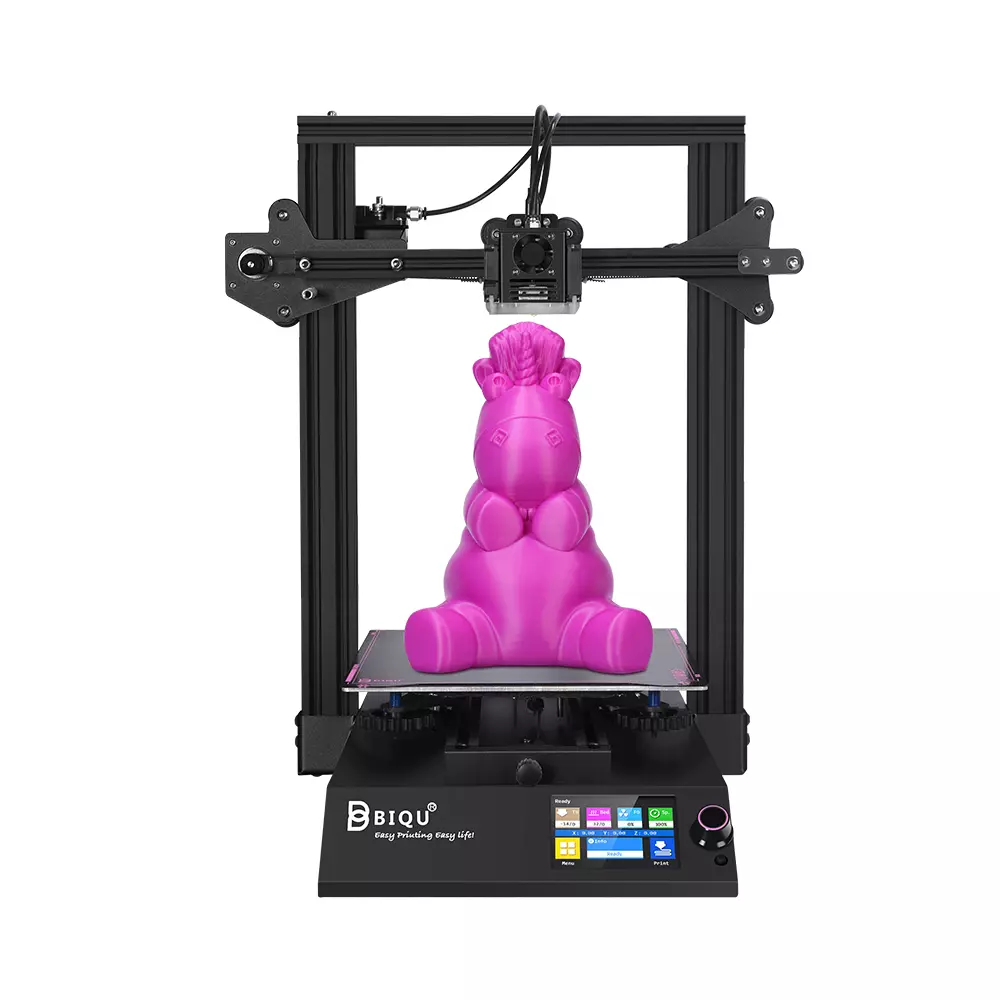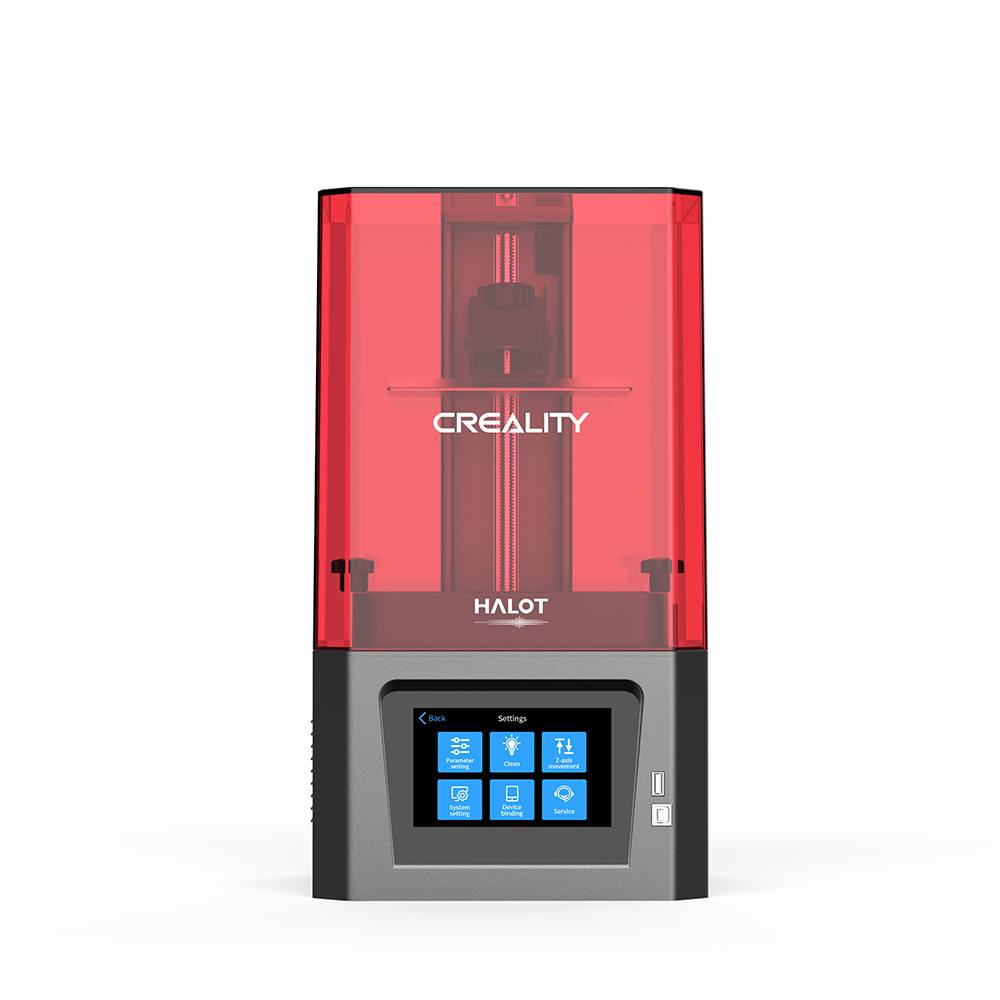Compare BIQU B1 vs Halot One
Comparison between the best 3D printers
Choose the best 3D printer at the best price. The cheapest 3D printers are here.
Buy a 3D printer here with 3D Fila.
 |
 |
|
| Model | BIQU B1 |
Halot One |
| Printing Material | Filament | Resin |
| Buy Filament for BigTreeTech BIQU B1 | Buy Resin forCreality 3D Halot One | |
| Estimated price | $269,00 | $250,00 |
| Manufacturer | BigTreeTech | Creality 3D |
| Release Year | 2020 | 2021 |
| Print Volume [mm] | 235x235x270 | 127x80x160 |
| Printer Size [mm] | 412x402x492 | 221x221x404 |
| Weight [kg] | 8,00 | 7,1 |
| Power Loss Recovery | YES | NO |
| Maximum Resolution [mm] | 0,1 | 2k |
| Processor | 32 Bits BTT SKR V 1.4 | |
| Display | Touchscreen TFT 3,5'' | |
| Power Supply | 24V / 360W | |
| Connectivity | SD / USB | |
| Operating systems | Windows, Mac, Linux | Windows, Mac, Linux |
| Date of registration in the system | 2021-04-14 | 2022-10-11 |
| Release date | 2020 | 2021 |
| Extra features | The BIQU B1 is an advanced 3D printer with a silent 32-bit BTT SKR V1.4 motherboard and ARM Cortex-M3 CPU, offering DIY interfaces (I2C, SPI, WiFi) and dual Z-axis. Its dual BTT B1 TFT35 V3.0 operating system allows real-time monitoring and multiple printing modes, including G-code visualization effects. It stands out for its BIQU SSS (Super Spring Steel), ensuring easy model adhesion and simplified removal, with the possibility of using it on both sides. It includes a filament sensor, automatically pausing printing in case of filament breakage. The multicolored RGB lights integrated into the hotend allow you to view the printing status even at night. Additional notes include the need for a BIQU-specific Type-C cable and extra interfaces for smart filament sensor and BL Touch. | Crealitys Halot-One printer stands out with several innovative features. It has a high-resolution touchscreen, providing an intuitive and responsive interface. Its quiet printing capability is remarkable, ideal for environments where noise is a concern. Assembly and setup are simple, with automatic functions facilitating quick start. Among its features, remote monitoring and adjustments via the Creality Cloud app stand out, simplifying remote print management. Replacing the FEP in the resin vat is easy, and the printer even includes extra FEP sheets. Top cover removal detection increases safety by automatically pausing printing. In addition, its integral light source promises high uniformity, optimizing print quality. |
| Support for multiple colors and materials (AMS and CFS) | NO | NO |
Notes * |
||
| Cost-benefit | 7 / 10 | 8 / 10 |
| Hardware | 2 / 10 | 0.6 / 10 |
| Tela | . | . |
| Print volume | 3 / 10 | 3 / 10 |
| Performance | 1 / 10 | 9 / 10 |
Conclusion |
| In comparing the BIQU B1 and the Halot One 3D printers, both models present distinct advantages tailored to different user needs and preferences. The **BIQU B1**, priced slightly higher, offers a larger print volume, making it suitable for users looking to work on more extensive projects. Its advanced features, such as power loss recovery, a 32-bit processor, and enhanced adhesion capabilities through its steel build plate, position it as a robust option for DIY enthusiasts and those interested in more hands-on printing experiences. However, it has a lower performance score, indicating some limitations in its printing capabilities. On the other hand, the **Halot One** excels in print quality and user experience with its intuitive high-resolution touchscreen and quieter operation. Its setup is simpler, making it ideal for newcomers to 3D printing. The integration with the Creality Cloud app allows remote monitoring, adding convenience for users. Although it has a smaller print volume and lacks certain advanced features offered by the BIQU B1, it compensates with a higher performance score. In conclusion, the choice between these two printers comes down to specific user needs: the BIQU B1 is optimal for those requiring larger build volumes and advanced features, while the Halot One is better suited for users prioritizing print quality, ease of use, and a quieter operation. Both printers offer good cost-benefit ratios, making them compelling options in their respective categories. |

